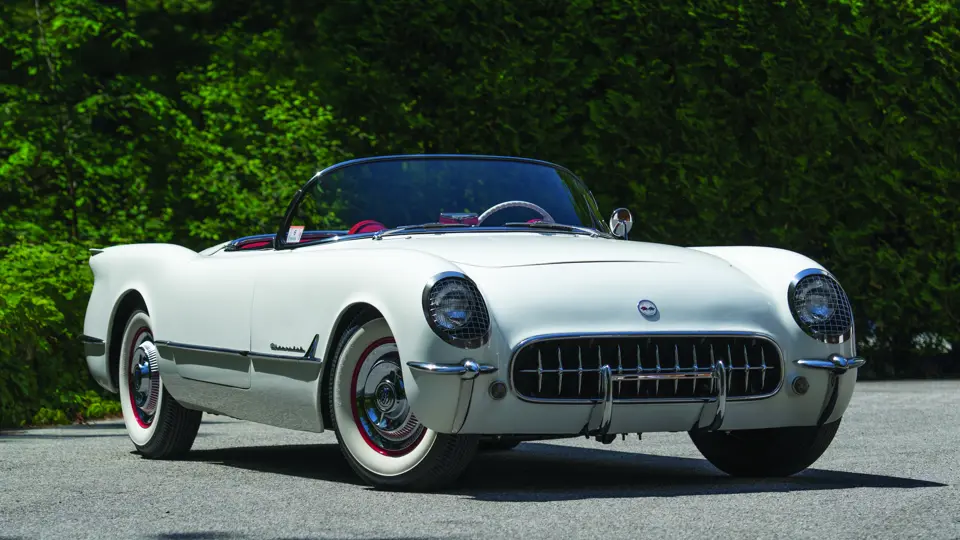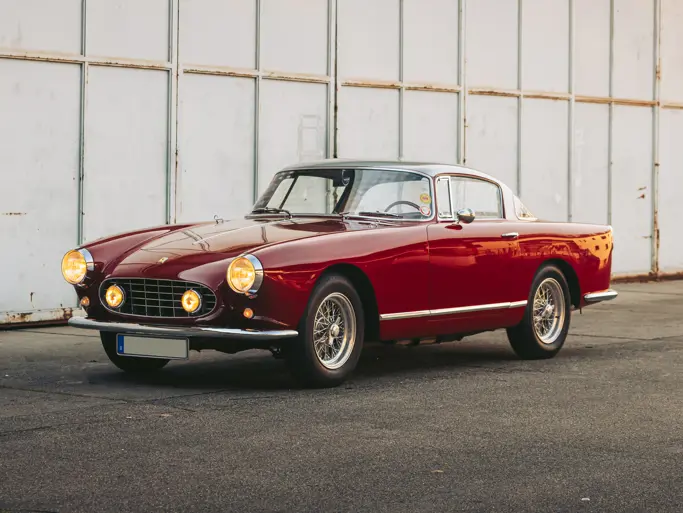 | Auburn, Indiana
| Auburn, Indiana
In the early 1950s, a team of GM engineers, headed up by Harley Earl, went to work trying to create a fiberglass-bodied car that had the appeal to compete with European sports cars. Harley Earl had excelled at swooping designs since the 1920s and designed aircraft-looking features into the car, including round dials blended into a curved dash, all of which were sheltered under a roofline that stood just under 47 inches tall. The six-cylinder engine was positioned farther toward the rear, which gave the flat hood a long, sleek appearance. By the time it was ready to be unveiled, it is reported that GM had spent over $1.5 million on the project.
This car, dubbed the Corvette “Dream Car,” debuted at the GM Motorama show, which was held at the stylish Waldorf-Astoria Hotel in New York City, and it achieved astounding results. Following the first weekend of the Motorama event in New York, over 300,000 people had seen the car and spent $800,000 on GM products. At the conclusion of Motorama’s U.S. tour, GM stated that over four million people had seen the car.
Production of the two-seat roadster started in June 1953, and by year’s end, a total of only 300 Corvettes rolled off the assembly line. This first year of Corvette production signified an important technical milestone: GM was the first major American car manufacturer to successfully mass-produce a vehicle whose underpan and body shell were made entirely of fiberglass.
The Corvette featured GM’s “Blue Flame” 235-cubic inch inline six-cylinder engine, which had triple Carter carburetors and a dual exhaust. The respectable 150 horsepower was transmitted to the road via a two-speed Powerglide automatic transmission. All 300 cars that were built in 1953 were visually identical, as they were finished in Polo White with a Sportsman Red interior. The car was fitted with subtle pieces of chrome trim, which ran along either side, as well as wire meshing covering the headlights.
When compared to the Jaguar XK 120 and the MGA of the time, the Corvette was proportionally smaller, yet it was more responsive and superior in handling. Unable to resist its magnetism, virtually every auto enthusiast felt compelled to get behind the wheel of the new Corvette. Even though its initial success was impressive, it is doubtful that even those at GM could have thought the Corvette would achieve the success it has over the six decades it has been in production.
This particular 1953 Corvette, the 127th of the 300 built in the inaugural year, has been the recipient of a concours-quality restoration. It is a Bloomington Gold winner and beautifully presented as would be expected from such an august honor.
The development work behind the car and an admiring public would assure the Corvette would eventually become America’s premier sports car, and it continues to be the leader 64 years later. This car represents the beginnings of an American sports car tradition that will last far into the future and continue to earn prominence and respect.





